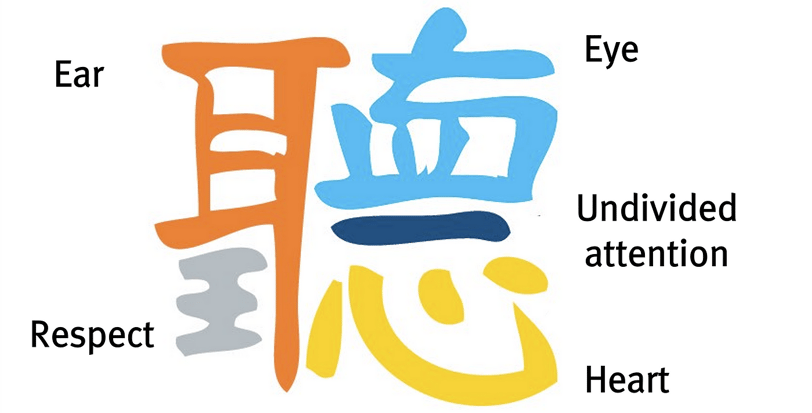The Art of Listening
Listening is a subtle art that us therapists are professionally trained to do, but despite the training that many of us receive, the art of listening sometimes gets lost.
12/11/20243 min read


What does it mean to really listen?
Listening is a subtle art that us therapists are professionally trained to do, but despite the training that many of us receive, the art of listening sometimes gets lost in a sea of techniques and strategies that we feel pressure from all sides to utilize for our clients. While those strategies may be helpful, the research bears out that the therapeutic relationship is the key driver of change in therapy, regardless of the theoretical approach.
Doug Lippman, a storytelling expert, writes a very profound definition of listening:
Listening has great power. It draws thoughts and feelings out of people as nothing else can. When someone listens to you well, you become aware of feelings you may not have realized that you felt.
You have ideas you may have never thought before. You become more eloquent, more insightful....
As a helpful listener, I do not interrupt you. I do not give advice. I do not do something else while listening to you. I do not convey distraction through nervous mannerisms. I do not finish your sentences for you. In spite of all my attempts to understand you, I do not assume I know what you mean.
I do not convey disapproval, impatience, or condescension. If I am confused, I show a desire for clarification, not dislike for your obtuseness. I do not act vindicated when you misspeak or correct yourself.
I do not sit impassively, withholding participation.
Instead, I project affection, approval, interest, and enthusiasm. I am your partner in communication. I am eager for your imminent success, fascinated by your struggles, forgiving of your mistakes, always expecting the best. I am your delighted listener” (Doug Lippman, 1998)
—
I believe the lifeblood of the therapeutic relationship is the art of listening. If it isn’t done attentively and intentionally by the therapist, the relationship loses its vitality, the places that need exploring, the dark places that listening could shed light on, are deprived of oxygen. One could say the same of any relationship that depends upon empathic communication.
Listening with One's Whole Body
I love the above pictured Chinese character for listening, because it truly encapsulates what separates listening from hearing or general conversation. It is represented with 5 parts:
Ear
The words we hear, the tones, the emotions behind the words.
Eye
What the body is telling us, what the face conveys.
Undivided Attention
I’m not distracted, there is nothing more important to me right now than this very conversation.
Heart
I am opening myself to you, I let a little of your experience into me, I accept it completely and I feel it with you.
Respect, or “king”
I hold the boundary with you around our time, I honor what you say by not assuming I know what you mean, but striving always to understand. I do not condescend, but treat you as the master, the king of your domain of experience. I serve the role of counsel to the king, serving the noblest parts of yourself and the kingdom.
Conclusion
The act of listening, in other words, is a completely embodied experience, encapsulating a felt presence as well as an acknowledged and concrete one. It is more than just hearing the words. In a constantly distracted culture, this type of engagement is harder and harder to come by, but it may be the very thing that our souls are longing for, hence the upshot in the amount of people engaging in psychotherapy in the past decade.
So the next time you are listening to a friend or colleague, see what happens when you listen with your entire body. What does it do for the other person? What does it do for you? And how do YOU know when someone is truly listening to you?
—
REFERENCES
Hatcher, R.L. (1999). Therapists’ view of treatment alliance and collaboration in therapy. Psychotherapy Research, 9, 405-423.
Horvath, A.O. (2001). The alliance. Psychotherapy, 38(4), 365-372.
Martin, D.J., Garske, J.P., & Davis, K.M. (2000). Relation of the therapeutic alliance with outcome and other variables: A meta-analytic review. Journal of Clinical and Consulting Psychology, 68, 438-450
